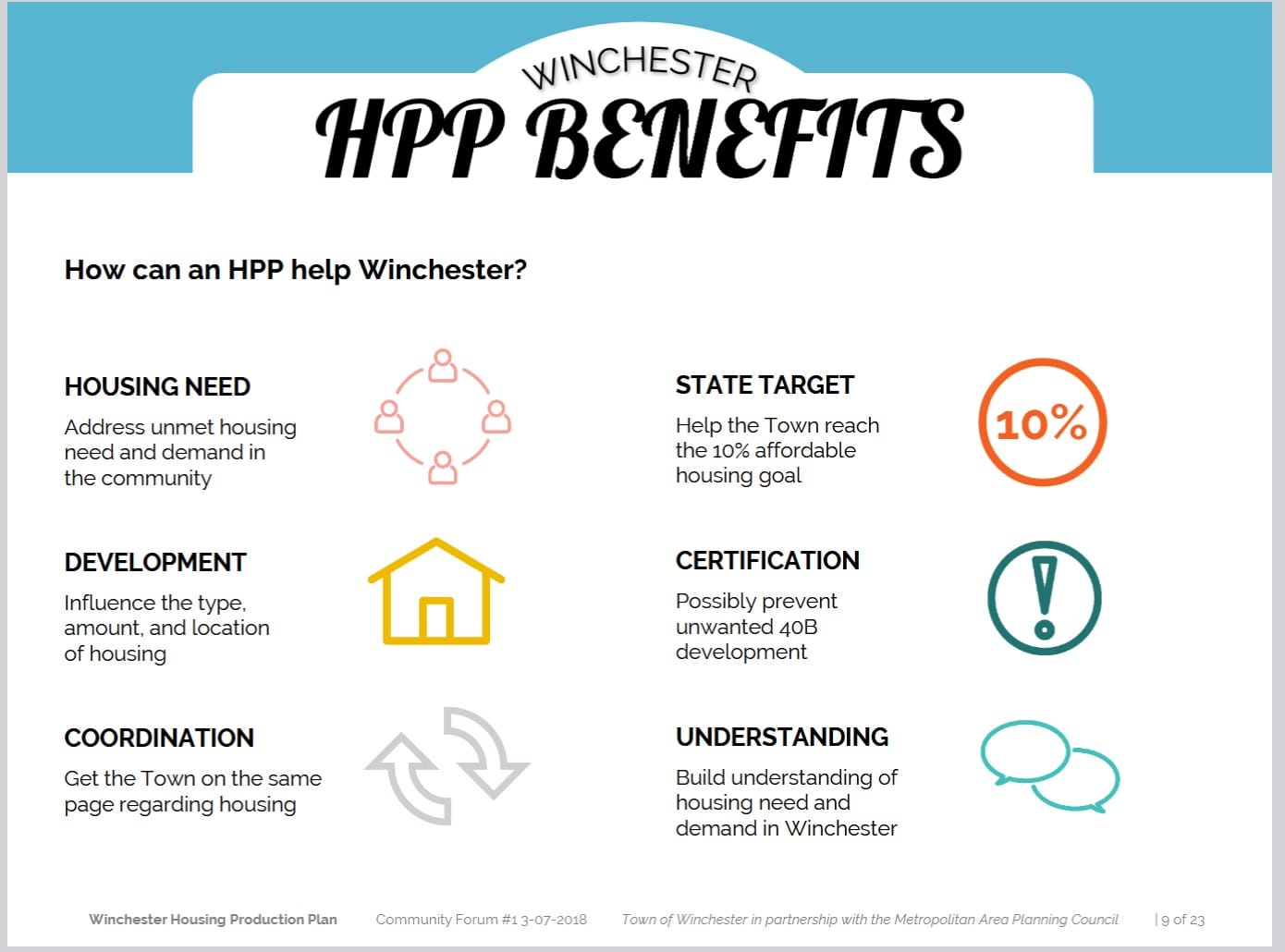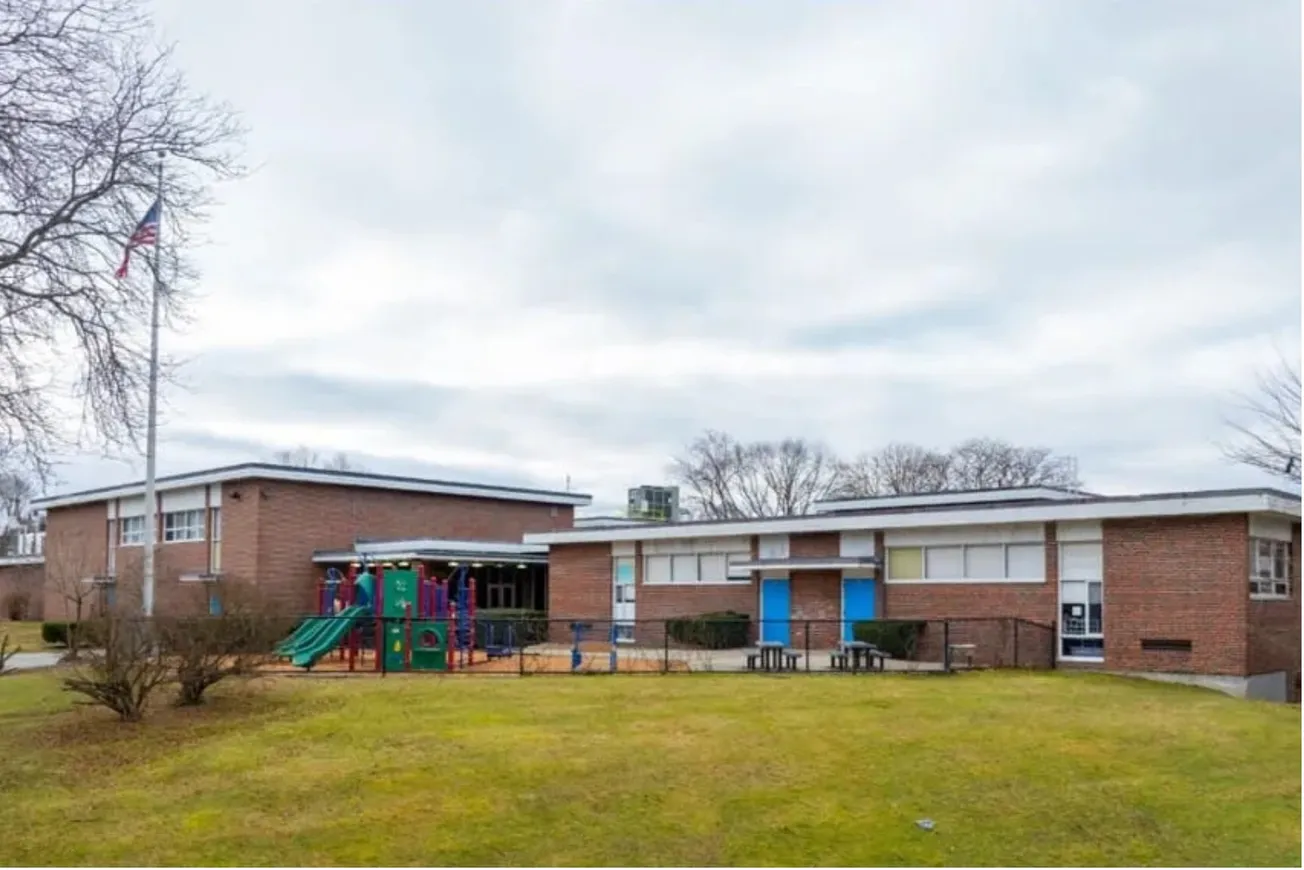Table of Contents
Winchester’s Select Board and Planning Board jointly approved an updated Housing Production Plan Monday night, laying out an ambitious roadmap to address the town’s affordable housing shortage while acknowledging significant hurdles in meeting state mandates.
A Housing Production Plan is a proactive strategy for planning and developing housing units to reach the goal of 10%, as mandated by the state.

The plan comes as Winchester faces endeavors to increase its subsidized housing inventory from its current 248 affordable units (3.07%) out of 8,073 total housing units — well below the state-required minimum of 807 units (10%).
Officials on Dec. 16 noted that even with 147 additional units pending approval from the River Street project, the town would only reach 395 affordable units (4.9%) — still far short of requirements.
“We’re not going to catch the car, but that doesn’t mean we won’t try," said Select Board Chair Michelle Prior, referring to the challenge of meeting state requirements while new regulations continue to “move the goalposts” through measures like mandatory accessory dwelling units and transit-oriented development requirements.
The plan
The five-year plan identifies several key strategies to address Winchester’s housing crisis, where median single-family home prices have reached $1,516,250 and 2,011 households (25%) out of 8,066 total are considered “cost-burdened.”
Among these, 491 of Winchester’s 1,349 renter households (39%) and 1,520 of 6,717 owner households (23%) spend more than 30% of their income on housing. The median household income stands at $208,531, with a stark disparity between family households ($250,001) and non-family households ($73,047).
The town currently has 1,935 households (24%) qualifying as low-income, earning less than $118,450 annually for a family of four, yet only 248 affordable housing units exist to serve this population.

The gap is particularly acute for senior residents, with 37% to 52% of elderly non-family households qualifying as low-income.
Select Board member John Fallon questioned the feasibility of adding 40 affordable units annually to maintain “safe harbor” status from state oversight.
“I just really wonder about the feasibility of adding 40 affordable units every year,” Fallon said. “We’re not Lexington. They’ve got hundreds of acres. We’re not going to really have that.”
Planning Board member Diab Jerius offered two potential paths forward: continuing to pursue large developments of 120-plus units every three years, or encouraging smaller scattered-site development across town.
Town data shows that in 2023, 16 out of 24 permitted single-family units (66%) were replacement units, with an additional 9 properties demolished.
“We can go with large 120-unit buildings every three years, or we can think about converting 10 lots a year to four-unit buildings and have that spread across town,” Jerius said. “We would retain the lower density that we want, and we could relieve some pressure on infrastructure and schools.”
The plan emphasizes creative solutions like “gentle infill” development and cottage clusters, pointing to successful examples like Winchester’s historic Lantern Lane development — six modest homes of approximately 1,300 square feet each on 0.25-acre lots, preserving 87% of the 1.6-acre site as open space.
What’s next?
Select Board member Bill McGonigle welcomed the plan’s aspirational nature while pushing for more specific next steps.
“As an aspirational goal, I think it’s putting us on the right course,” McGonigle said. “But we need to look beyond areas like River Street where development is already happening. What’s our next target? Where else can we find good affordable housing opportunities in this town? Because I don’t want to waste our attention on something that we’ve already put into play.”
Recent community victories, including the passage of the Community Preservation Act and new mixed-use zoning for North Main Street, have created momentum for housing initiatives. The town has also seen increased multi-family development, with 269 multi-family units and 193 single-family units permitted between 2017 and 2023.

“We all move to Winchester because we’re close to Boston, but it doesn’t feel like it,” said Planning Board Chair Keri Layton. “We want to preserve that. We want to welcome community members to this community as it feels, but we recognize the deficits.”
Public comment on the draft plan included support for exploring tax incentives and creative financing to preserve existing affordable units. Several residents highlighted examples of more affordable housing options, including condominiums that sold for between $295,000 and $393,000 at Parkview Condominiums — significantly below the town’s median condo price of $750,750.
Next steps include submitting the plan to the state’s Executive Office of Housing and Livable Communities for review and approval. Officials noted implementation will require ongoing community engagement and careful consideration of neighborhood impacts.
“If we want to be doing changes in zoning in town, the first step is going to be getting buy-in from the town,” said Planning Board member Brian Vernaglia. “I think we need to convince people that one path forward is better than another. It’s better to say that this is something that we need as a town, and get people to buy in.”
The plan will serve as Winchester’s housing roadmap through 2029, though officials acknowledged state requirements and local needs may continue to evolve. An implementation committee will be formed to guide the plan’s execution and monitor progress toward housing goals.








